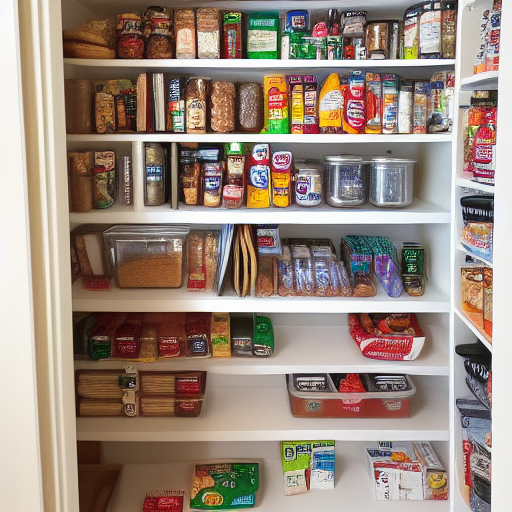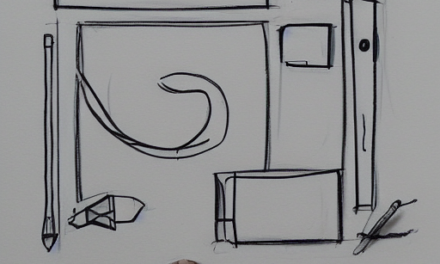In order to keep the pantry organised, you need to know which items are stored where. First, do an inventory of the items you store in your pantry. Separate them into different groups and note down where you can find them. Next, use a lazy Susan or bins to help you keep the items you need separated.
Organizing a pantry
One of the first things to do when organizing a pantry is to sort everything into separate bags. Next, you should ask yourself if you still need the items. After this step, you can go through your entire pantry and decide which items fit in which category. Once you have determined the areas for the different categories, you can purchase storage containers and start organizing! Take measurements of your pantry shelves to ensure that you have enough space for all of your items.
You should label containers to make identification easier. You can purchase waterproof vinyl labels for 179 items in the pantry. For bulky supplies, use see-through bins or wire baskets. Stacking boxes sideways will be more efficient than stacking them upright. Also, remove the inner food bags from your containers and roll them gently.
After you have sorted your items, you should give your pantry a thorough cleaning. Make sure to get rid of all expired foods and clean the shelves. If you have some left over items, consider donating them to your local food bank.
Creating zones
Creating zones in your pantry is a great way to keep everything in their proper place. For example, you could have separate zones for cooking supplies and cooking oils. Alternatively, you could put baking goods and other baking items in stacked plastic bags or labeled canisters. This way, you can always access the ingredients that you need quickly. Creating zones in your pantry can also help you avoid wasting space on unnecessary items like individually-wrapped children’s snacks, which take up valuable space in your kitchen.
Creating zones in your pantry can help you prepare for various circumstances and make meal preparation easier. It will also reduce the time spent searching for ingredients. For example, you can create a zone for items that you use the most often and one for those that aren’t used frequently. By creating these zones, you will have a convenient way to see what you have.
Another way to make your pantry more organised is to create zones for different meal types. For example, you can have a zone for breakfast, lunch and dinner foods, and another for dessert mixes. These zones can help you easily find the ingredients that you need in a hurry and set up the kitchen for a healthier diet.
Using bins
Using bins for organising pantry can be an effective way to make storage more efficient. They can be used to store various items that are difficult to find or that need a more organised storage space. For example, if you are looking for a container for spices, you can opt for clear ones to make the space look neater. Moreover, using clear containers can prevent mice from getting into your food storage space.
Bins are also useful for keeping items upright in the pantry. This helps to avoid spills when the pantry doors open. Additionally, these containers can be pulled out to access products stacked at the back. Many bins are built-in in cabinets, and there are even some that have handles. Other bins such as Lazy Susans are helpful for organising the awkward corners of cabinets.
Using clear containers for storage can also make the pantry feel airy. They are also attractive, which helps keep bugs from damaging grains. They also ensure that ingredients remain fresh.
Using a lazy Susan
Using a Lazy Susan for organising your pantry is an excellent way to make use of space in your kitchen cabinets and drawers. Its versatile design can store anything from snacks to baking ingredients. In addition, you can group similar items together for easier access. Whether you have a large or small pantry, a Lazy Susan can make organising a breeze.
When using a Lazy Susan for organising your pantry, make sure to keep your core products visible. It’s best to put taller items in the center of the shelves, while shorter items should be placed at the periphery. Otherwise, there is a risk of a domino effect and items spoiling.
A Lazy Susan can help you maximize your pantry space by allowing you to utilize the space on each side. This allows you to create more straight shelf space and save space in corners. You can also add bins to store your spices and other items that you may need to use regularly.
Lazy Susans are great for kitchen cabinets because they rotate as they store the items. This makes it easier to reach items that are hidden deep in the corner. Lazy Susans are also handy in the bathroom for organising your cosmetics and makeup.
Using cabinet doors
You can use cabinet doors to store pantry items and create a visual cubby for long and short cooking tools. This will help you keep everything in their proper place and avoid items getting mixed up in slots too large or too small. Another way to keep your pantry organized is to use rolling plant stands to turn the floor of your pantry into an appliance garage. You can also use dividers to store similar items together. Not only will they save space but they will also help you identify items easily.
For a sophisticated look, you can use subsection shelves. This way, your pantry will look more organised and easier on the eyes. You can also hang small appliances and lightweight items on magnetic strips. By extending the cabinetry up to the walls, you can even create a space on the back of your pantry door to store your kitchen tools.
You can also use your cabinet doors to hold pot lids. One easy way to organize your pot lids is to use removable hooks to hang them on cabinet doors. Another clever way to organize spices is to use metal strips to create a spice rack. Just make sure to leave enough space for shelves.
Taking inventory
Making an inventory of what you have in your pantry is an important part of food storage. This process can be done in several ways. One is by using a paper checklist that you can place in a plastic page protector and stick to the door of your fridge, freezer, or pantry. You can also use a digital spreadsheet that you can keep on your computer or laptop. The advantage of a digital spreadsheet is that you can update it as needed.
Once you have an accurate inventory, you can start planning how you’re going to organize your pantry. Make sure to list the items that you use most frequently. Group these by type and by category. For instance, you can group canned goods and snack bags together. You should also group items that are frequently used together. Sort items by alphabetical order or another system that makes sense to you. You should also make sure to put your frequently used items near the door or entryway of your pantry.
When you’re organising your pantry, it’s helpful to take inventory of everything so you know where everything is. This will save you time, and it will allow you to restock.
Labeling
Putting labels on your pantry is a great way to organise and declutter your pantry. Without labels, it can be difficult to locate what you’re looking for. Labels are especially useful when you’re decanting products into individual containers. The labels will help you identify the contents of each container.
Besides being useful, labels also add a nice visual element to your pantry. A colourful and attractive label can improve your mood. While organising your pantry, make sure to keep it neat and easy to navigate. The best way to do this is to use custom labels for containers. These labels are a perfect way to inject your own personal style into your organising project.
Labelling your pantry helps you see what you’re looking for and return items to the right spot. You can also group like items together so you can find them easily. For example, if you buy canned tomatoes and use them weekly, place them at the front of the pantry. This will free up extra pantry storage and keep your regularly used ingredients close to where you’re likely to use them.
Labelling your pantry is an excellent way to stay organized and de-clutter your kitchen. This will make finding things in the pantry much easier for you and your family members. Using labels will make it easier for everyone to find what they need, so everyone will be on the same page.













